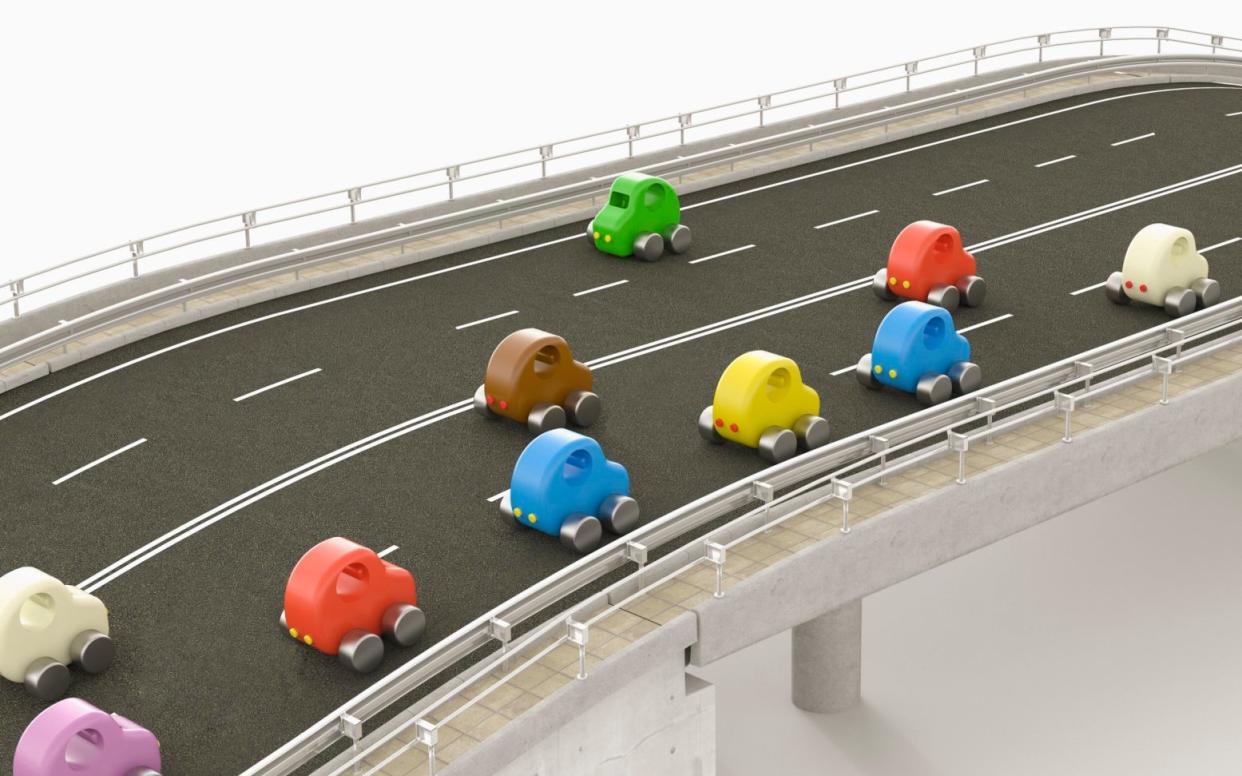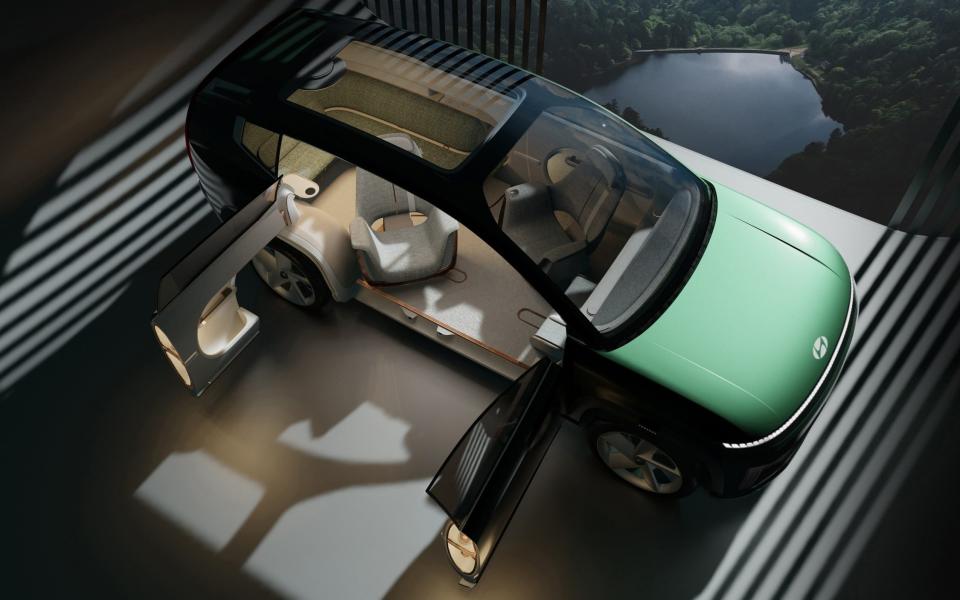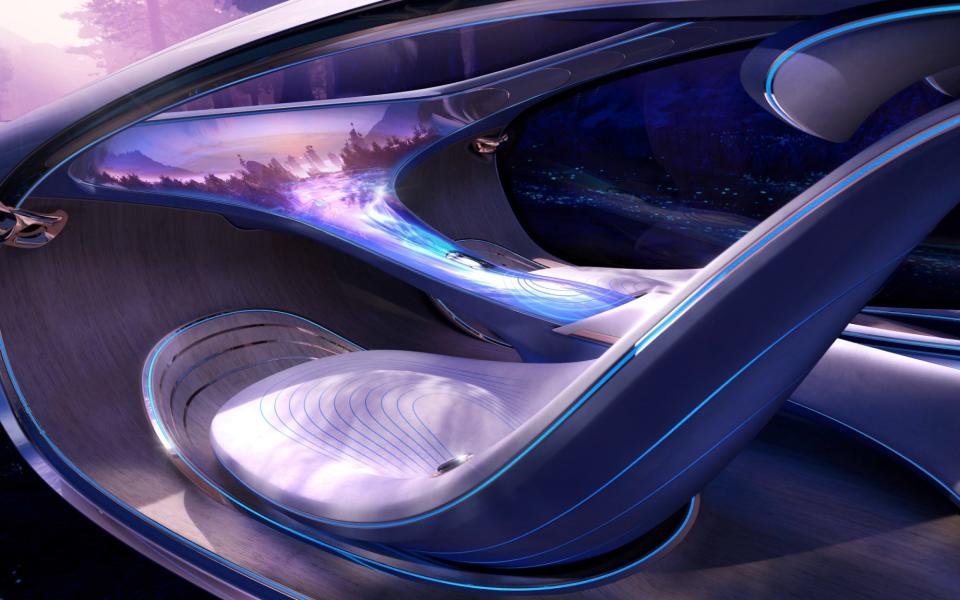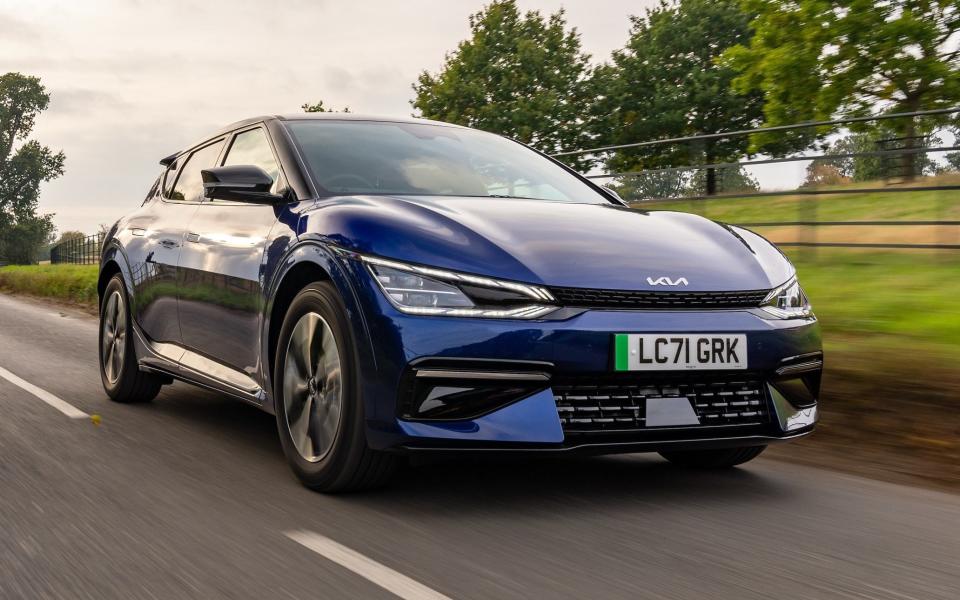How EVs can stand out, and do buyers care if they all look similar?

It’s all change in the world of motoring. Not only do many new cars no longer have noisy engines and smelly exhausts. The way their makers tell us about them and the features they sell us is shifting dramatically, too.
Currently car companies sell electric vehicles (EVs) alongside petrol, diesel and hybrid models. The electric powertrain alone is sufficient to differentiate them. But, in a future where even more parts-sharing is inevitable and there isn’t even a combustion engine to add character and define a car’s styling, how will car makers ensure models stand out? And will they talk about the differing electric motors in the same way that we can still (just about) discuss an in-line six versus a V8? We asked some experts with an eye to the future.

Why don’t car makers talk about electric motors?
They have slightly bigger fish to fry without bombarding us with the nitty gritty of slightly baffling electric motor technology. “For most people the engine or motor isn’t a big thing,” says Johnny Burn, a spokesperson for Audi, which uses two different kinds of electric motor.
“If we are talking about a big-selling model, it’s not really that important to the buyer for us to say what motors they use. Whether it looks good, drives well and is affordable is more relevant.”
Is this really what customers want?
Electric vehicle expert Alan Depledge from EV Consulting believes we’re no longer that bothered about what goes on under the bonnet. “This started before EVs when car makers started putting covers over the oily bits under the bonnet and gave us electronic dip sticks on the dashboard,” he said.
“A lot of people don’t love cars. They just buy one because they need one. Cars are becoming like phones: a utility. Mobility as a service, as they say.”
Consultancy Accenture has set up Mobility X which is helping to ease car companies into the future. Managing director Jürgen Reers has a different take on the significance of powertrains. “They’re not unimportant but other aspects are more important,” he says.

“Vehicles will become a very immersive space; we’re looking at it as the third living space (after home and work). We believe the largest growth will come from digital services.”
How our cars will make life more convenient
This isn’t just about making it easier for young drivers to make TikTok films in their cars. Our cars will work much more closely with their environment.
Reers explains: “The car will be able to optimise when you charge, to maximise the cost and efficiency of charging. Or perhaps it’ll be integrated with parking. Is there parking where I want to go? Can I book it? Are there charging points? Are these compatible with my car? Are they available and do they work?”
It’s all about the user experience
Car makers will still use the driving experience to make models stand out. “Some people will want cars that perform well with ‘one-pedal driving’ (when the brake regeneration function is strong enough that the traditional friction brakes are unnecessary altogether in town driving). Others might go for a more conventional car. The artificial sound EVs have can make them different too,” Reers says.
He and professor in transport design at Coventry University Paul Herriotts agree that car makers will also seek to outdo each other with how seamlessly their cars operate. Herriotts says: “People are used to smartphones and tablets that work well. We take that as the norm. We haven’t seen that in cars yet.

“The infotainment in cars should be easy to use, immersive and visually appealing. Car makers recognise that how we interact with our cars is vital and will increasingly differentiate between brands. The implications of getting things wrong there are massive.”
At least they’ll look the part
With no engines to talk about, car makers will turn ever more to appearance to stand apart from rivals, Herriotts believes.
He explains: “The car’s powertrain will no longer be the difference between brands. But removing the engine has the benefit of giving designers more freedom. I believe exterior design will become a greater differentiator.”
The switch to EVs will also enable car designers to give us more space. “We haven’t really seen this yet with the layout of the latest generation of EVs. But that will change,” Herriotts adds.
The result of designers exploiting this new-found freedom? Cars will look increasingly like some of the more far-out concept cars of recent years such as the Mercedes-Benz Vision AVTR, the Audi Grandsphere Concept or the DS Automobiles Aero Sport Lounge.
Herriotts adds: “The sportscar segment faces a bigger challenge with the EV transition. When you’ve taken away the sound and vibration cues, how does the car still feel thrilling? I believe this group of car makers will start to focus on luxury by adding design quality and excellence.
“There will be more bespoke designs, limited editions and an increase in the kinds of premium materials that are used. And of course, some of these attributes will filter down to more mainstream cars.”
So what about electric motors? Is there a difference?
Yes, but it’s very subtle. Ignoring differences in power output, there are broadly three types of electric motor, not that car firms exactly boast about them.

Permanent magnet or synchronous motors are highly efficient and employ rare earth metals. These are used on the Kia EV6, Tesla Model S and Model 3. The induction or asynchronous motor is used on the Audi e-tron and Mercedes EQC, and are comparatively cheap but not quite as efficient.
The third kind is the current-excited synchronous motor. These replace rare earth magnets with brushes. They’re very nearly as efficient as the permanent magnet motor but are arguably more sustainable. They’re favoured by BMW on its iX3 and i4.
What the future holds
Car makers, it seems, will tell us about pretty much everything their cars do, apart from the powertrains. Reliability, usability, design and the ownership experience will all be used by car companies to stand apart from each other. Even if it’s at the expense of engines, surely that isn’t such a bad thing?
For new and used buying guides, tips and expert advice, visit our Car Advice section, or sign up to the Telegraph Cars newsletter here and to join the Telegraph Motoring Club Facebook group click here

 Yahoo Movies
Yahoo Movies 
